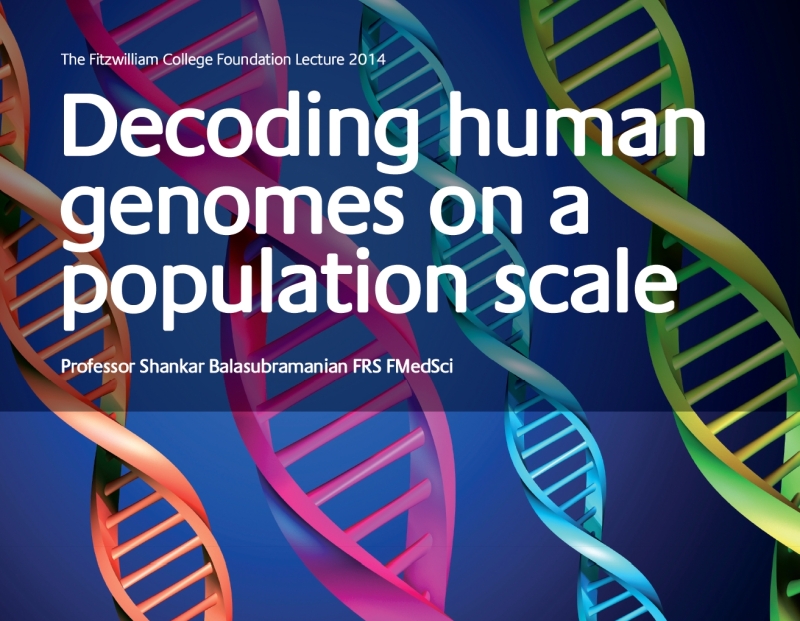Fitzwilliam College Foundation Lecture 2014 - Professor Shankar Balasubramanian - 'Decoding human genomes on a population scale'
Duration: 48 mins 57 secs
Share this media item:
Embed this media item:
Embed this media item:
About this item

| Description: | Fitzwilliam College Foundation Lecture 2014. Professor Shankar Balasubramanian FRS FMedSci, speaking at Fitzwilliam College on 20 November 2014. |
|---|
| Created: | 2014-12-05 13:38 | ||
|---|---|---|---|
| Collection: | Fitzwilliam College lectures | ||
| Publisher: | Fitzwilliam College | ||
| Copyright: | Fitzwilliam College | ||
| Language: | eng (English) | ||
| Distribution: |
World
|
||
| Keywords: | DNA; Genetics; Sequencing; Genome; Biology; | ||
| Credits: |
|
||
| Explicit content: | No | ||
| Abstract: | One copy of the human genome comprises a code made up of an arrangement of just over three billion units of the DNA bases (or '"letters") G, C, A and T. The Human Genome Project took many years and thousands of instruments to decode the first human genome at a cost of several hundred million dollars. A human genome can now be decoded on a single instrument in one day for a thousand dollars.
In this lecture Professor Shankar Balasubramanian will discuss the history of DNA sequencing and a method for rapidly decoding the genomes that originated in Cambridge in the 1990s. Professor Balasubramanian will also consider the impact of rapid genome sequencing on the life sciences, medicine and society. Professor Shankar Balasubramanian is the Herchel Smith Professor of Medicinal Chemistry at the Department of Chemistry and a Senior Group Leader at the Cancer Research UK Cambridge Institute. He was an undergraduate and postgraduate at Fitzwilliam College (1985-1991) and has been a Cambridge academic and Fellow of Trinity College since 1994. Professor Balasubramanian is an expert in the study of nucleic acids who is recognised for contributions to chemistry and its application to the biological and medical sciences. He co-invented the leading method for decoding DNA, originally called Solexa sequencing (now Illumina sequencing) that has made routine, accurate, low-cost sequencing of human genomes a reality and has transformed modern biology. He has made seminal contributions on demonstrating the existence of four-stranded structures called G-quadruplexes in the DNA of human cells. His work on the intervention of genome function using small molecules has revealed molecular mechanisms that can be exploited, e.g. to modulate the biology of cancer. More recently, he has made inventive contributions with chemistry for decoding the epigenetic letters of the DNA alphabet that go beyond G, C, T, and A. |
|---|---|

